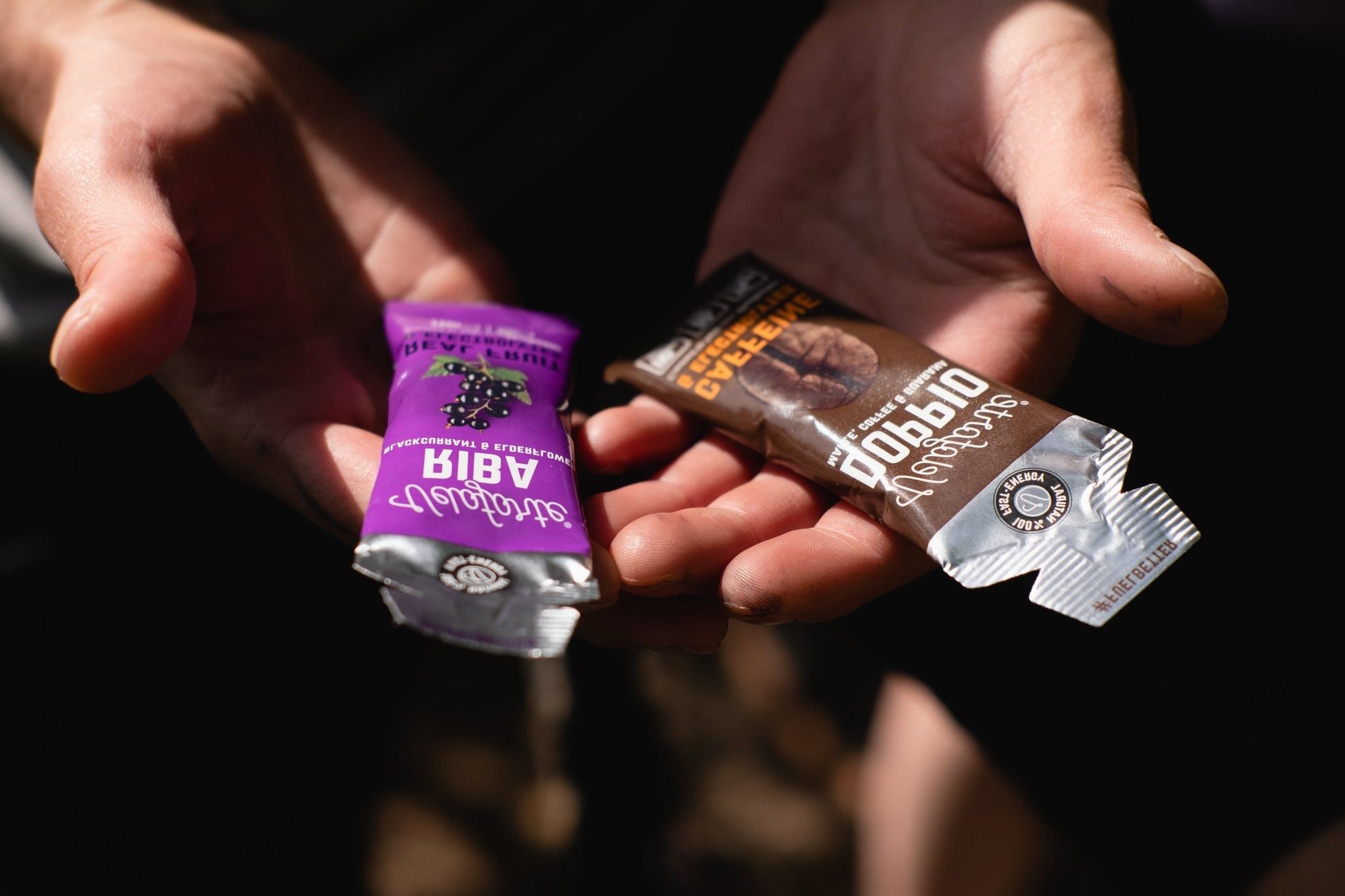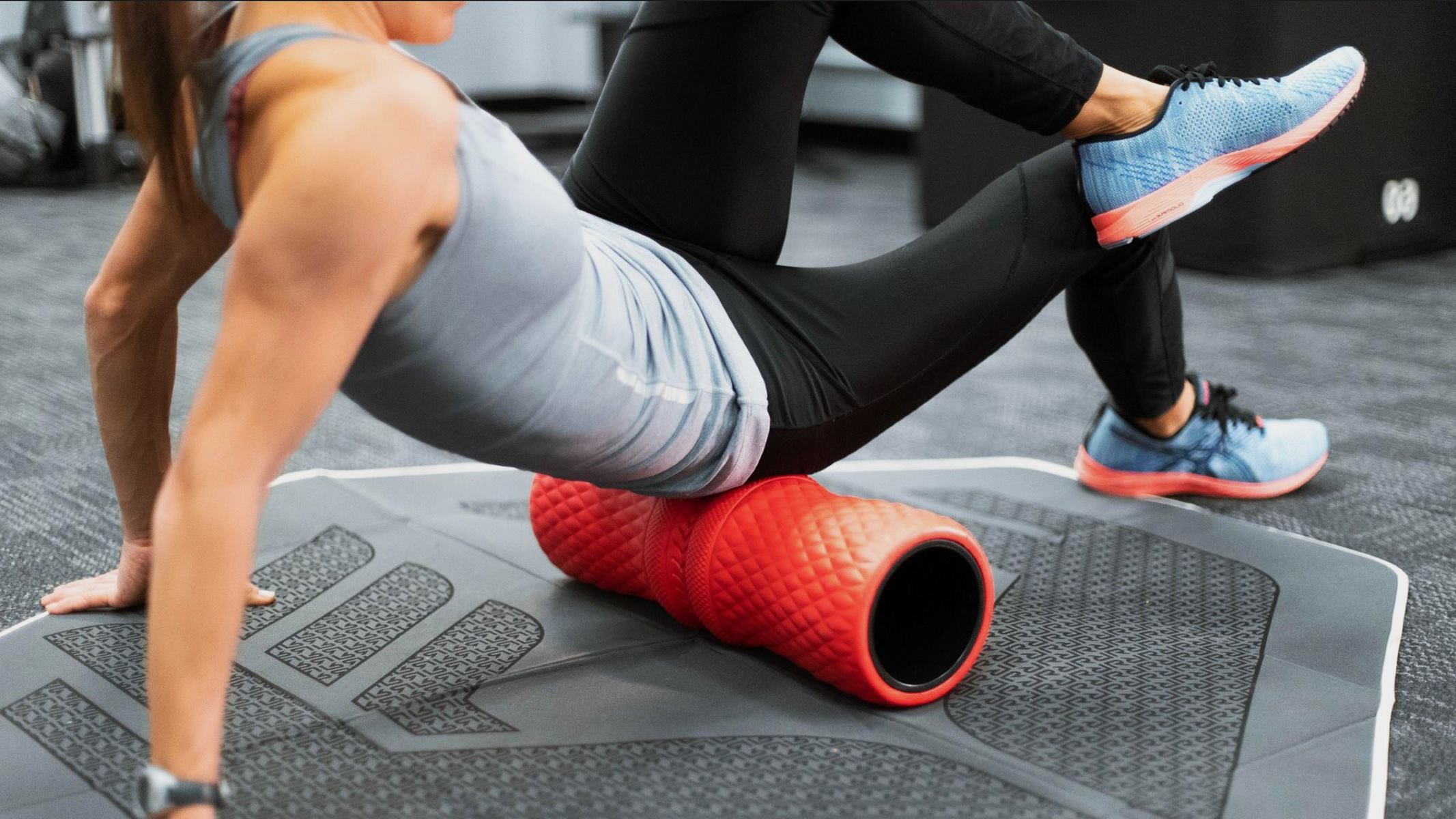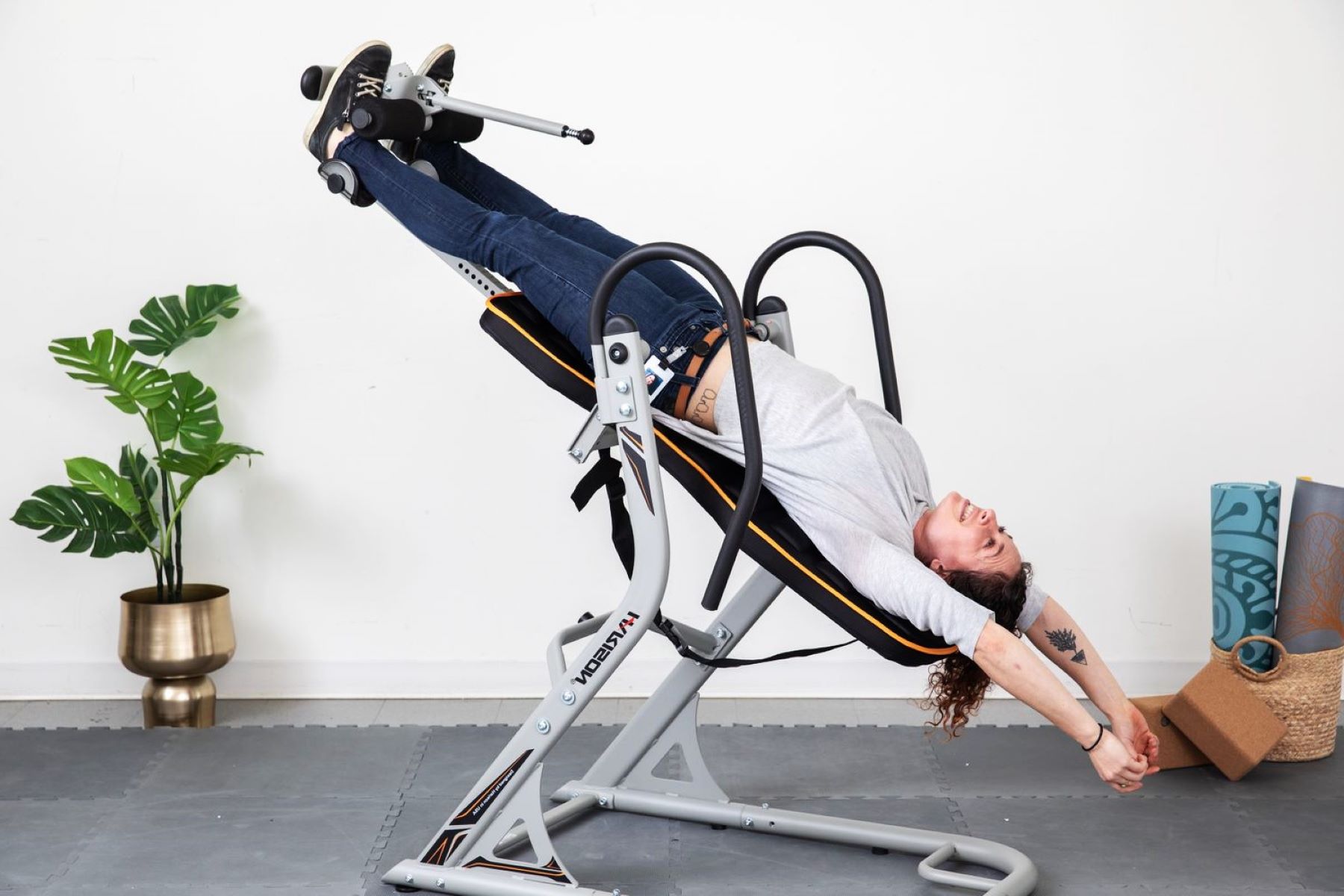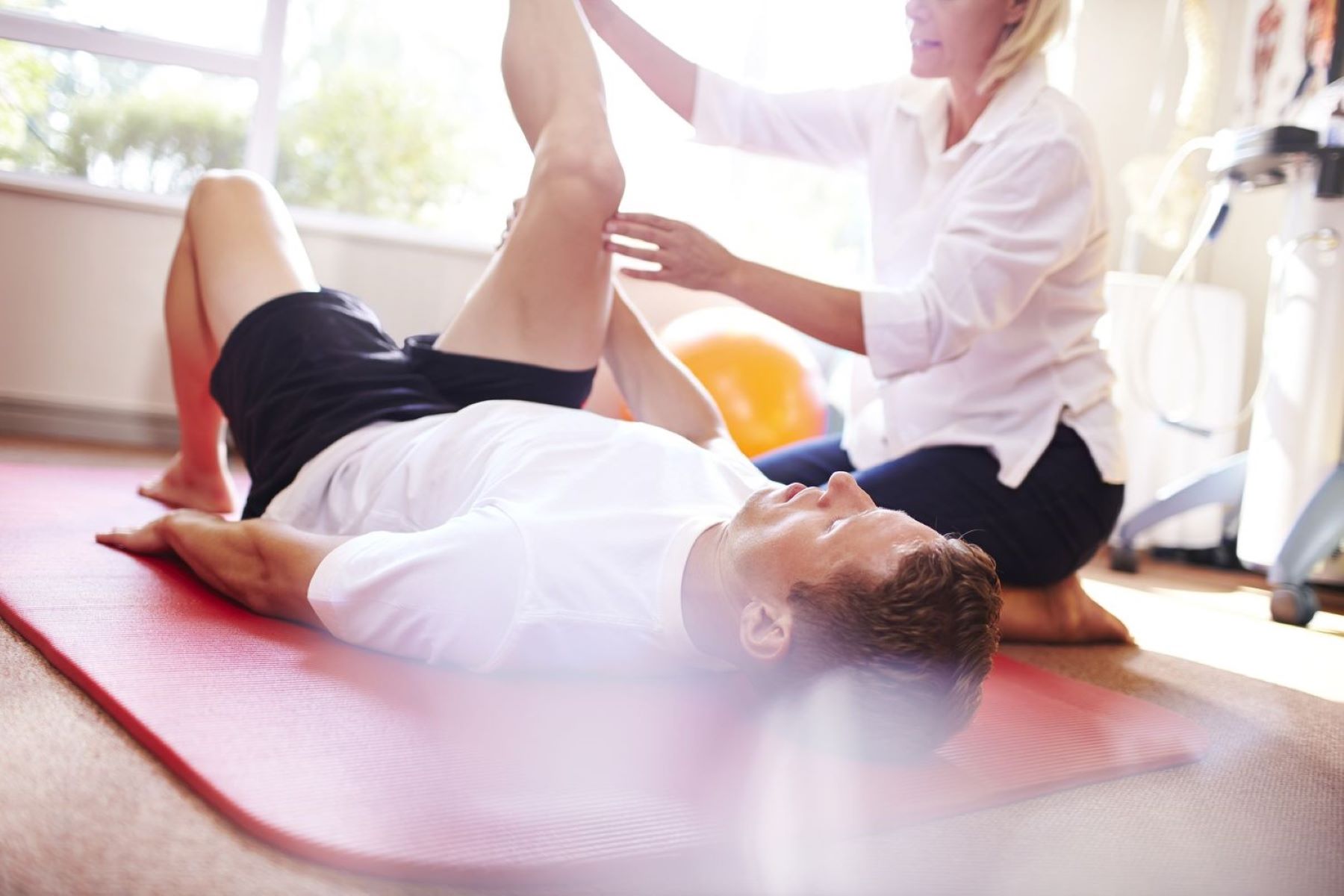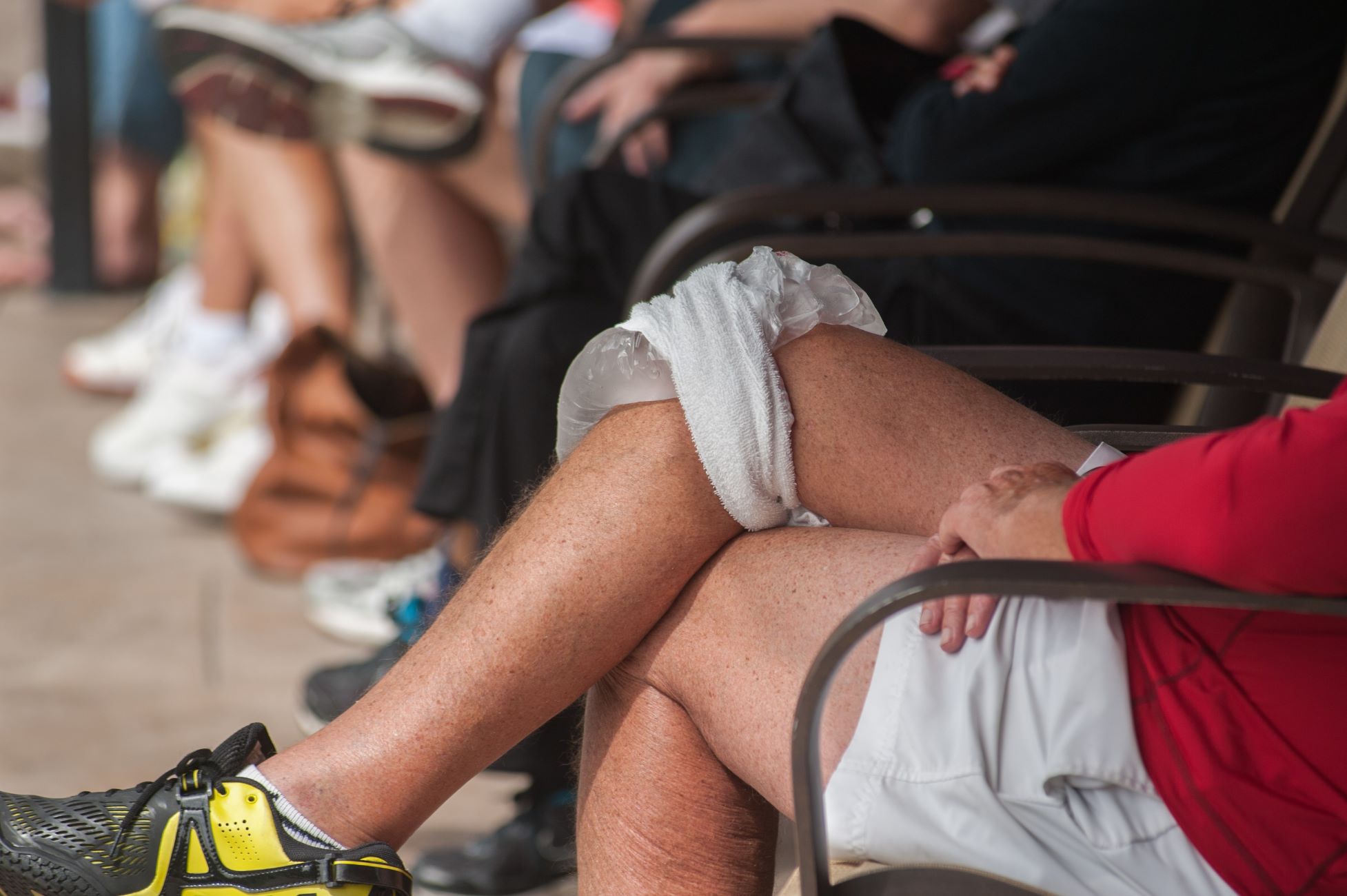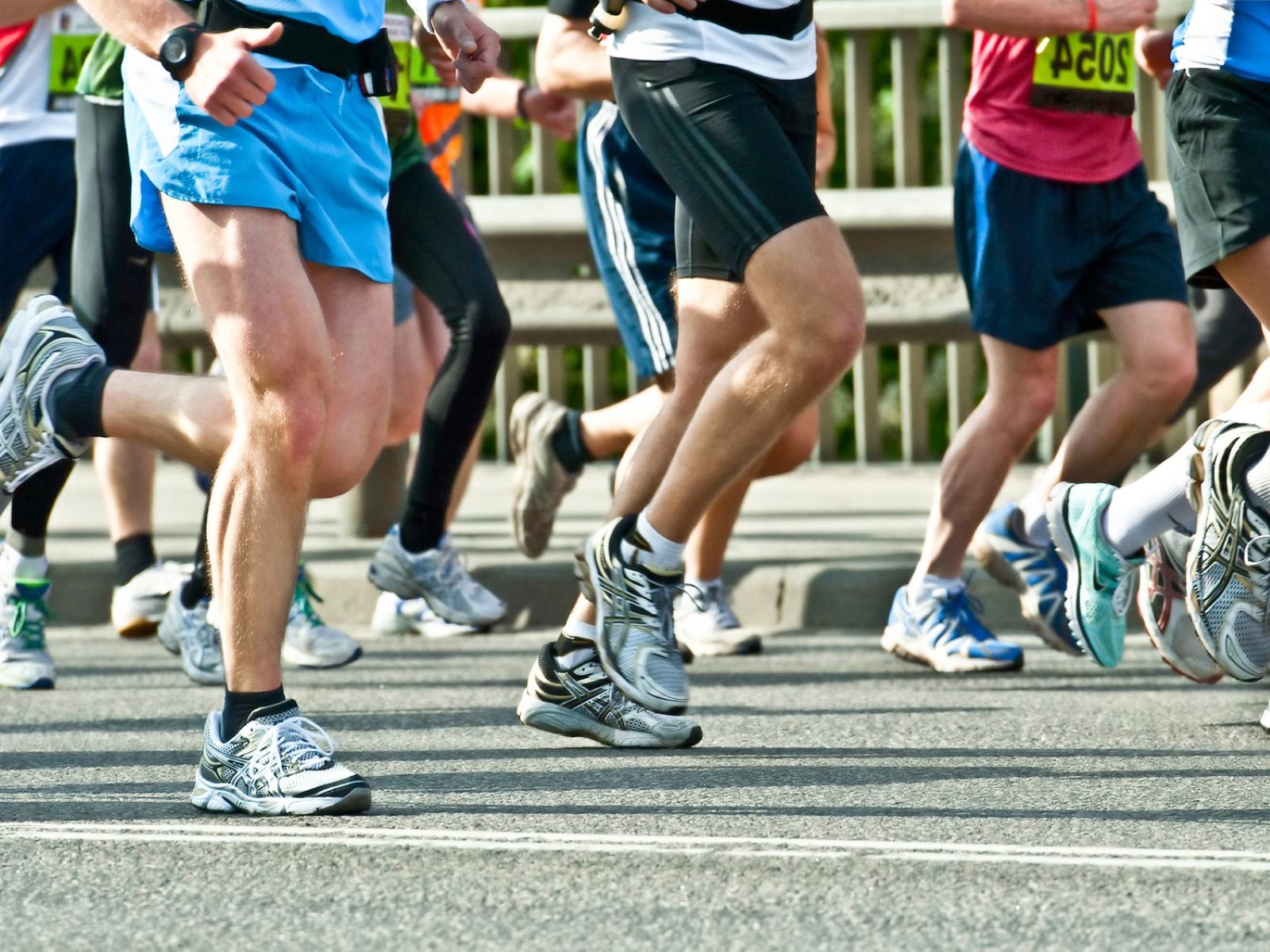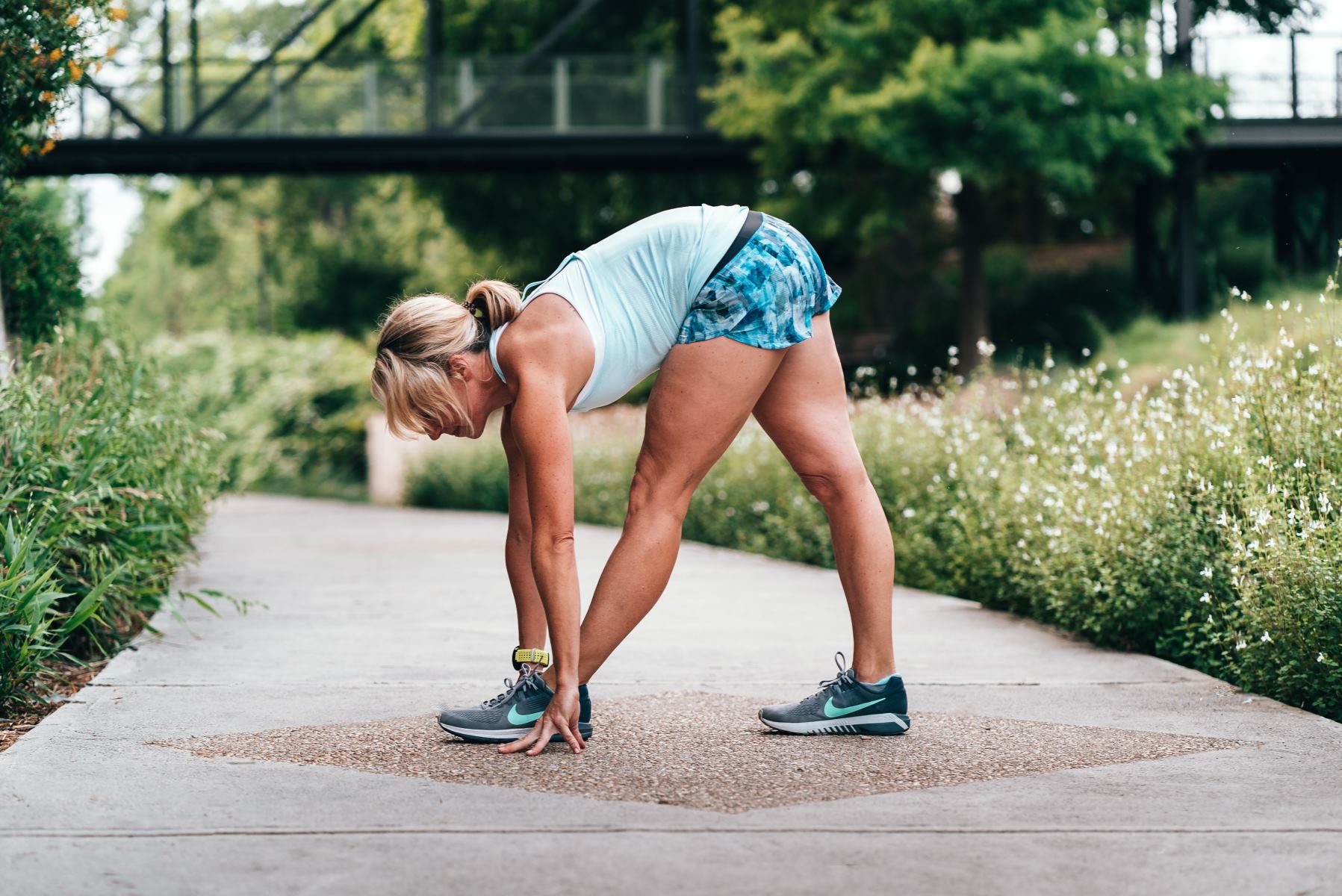Home>Health & Nutrition>Recovery>5 Foam Roller Exercises For Muscle Recovery After Running
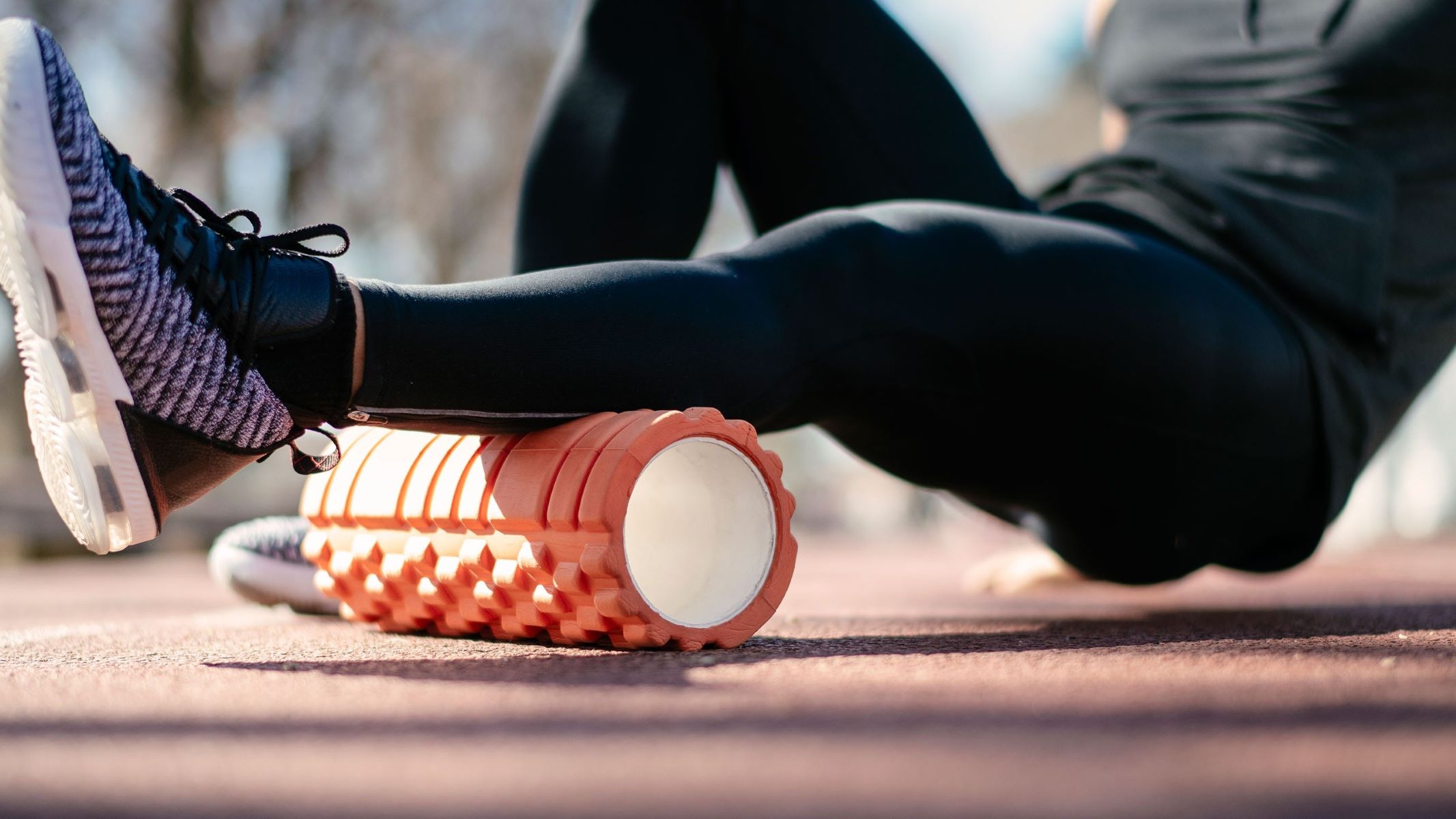

Recovery
5 Foam Roller Exercises For Muscle Recovery After Running
Published: February 27, 2024
Enhance muscle recovery after running with these 5 foam roller exercises. Speed up your recovery process and prevent muscle soreness.
(Many of the links in this article redirect to a specific reviewed product. Your purchase of these products through affiliate links helps to generate commission for Therunningadvisor.com, at no extra cost. Learn more)
Table of Contents
Introduction
Running is an invigorating and rewarding form of exercise that offers numerous physical and mental benefits. However, the repetitive nature of this activity can lead to muscle tightness, soreness, and potential injury. To counteract these effects and promote efficient muscle recovery, incorporating foam roller exercises into your post-run routine can be immensely beneficial. Foam rolling, also known as self-myofascial release, is a form of self-massage that targets tight muscles and fascia to alleviate tension and enhance flexibility.
In this article, we will explore five effective foam roller exercises specifically tailored to aid muscle recovery after running. These exercises are designed to target key muscle groups that are commonly engaged during running, such as the quadriceps, hamstrings, IT band, calves, and upper back. By incorporating these exercises into your post-run regimen, you can expedite muscle recovery, reduce the risk of injury, and improve overall performance.
Whether you are a seasoned runner or just beginning your fitness journey, understanding the benefits of using a foam roller for muscle recovery and mastering the proper techniques for these exercises can significantly enhance your running experience. Let's delve into the transformative impact of foam rolling and discover how these targeted exercises can elevate your post-run recovery routine.
Benefits of Using a Foam Roller for Muscle Recovery
Foam rolling has emerged as a popular and effective method for enhancing muscle recovery, especially for individuals engaged in high-impact activities such as running. Incorporating a foam roller into your post-run routine offers a myriad of benefits that can positively impact your overall well-being and athletic performance. Let's explore the compelling advantages of utilizing a foam roller for muscle recovery:
-
Alleviates Muscle Tension and Soreness: After a rigorous running session, muscles can become tight and sore due to the repetitive impact and exertion. Foam rolling targets these areas of tension, applying gentle pressure to release knots and adhesions within the muscle tissue. This process, known as self-myofascial release, promotes blood flow to the muscles, reducing soreness and enhancing overall flexibility.
-
Enhances Range of Motion: Engaging in foam roller exercises post-run can significantly improve your range of motion. By targeting specific muscle groups, such as the quadriceps, hamstrings, and calves, foam rolling helps to break down adhesions and scar tissue, allowing for greater flexibility and mobility. This increased range of motion can contribute to improved running mechanics and reduced risk of injury.
-
Accelerates Muscle Recovery: The application of pressure through foam rolling stimulates blood flow to the muscles, facilitating the delivery of oxygen and nutrients essential for the recovery process. This accelerated muscle recovery can aid in reducing post-run fatigue and minimizing the duration of muscle soreness, allowing you to return to your running routine more quickly.
-
Prevents Injury: By incorporating foam roller exercises into your post-run regimen, you can proactively reduce the risk of injury. Targeting tight and overworked muscles through foam rolling helps to maintain muscle elasticity and prevent the development of imbalances or compensatory movements that may lead to injury over time.
-
Promotes Relaxation and Stress Relief: Foam rolling not only benefits the physical aspects of muscle recovery but also contributes to mental relaxation and stress relief. The rhythmic motion of foam rolling can have a calming effect on the nervous system, promoting a sense of relaxation and aiding in post-run recovery both physically and mentally.
Incorporating foam roller exercises into your post-run routine can yield significant improvements in muscle recovery, flexibility, and overall well-being. By harnessing the benefits of foam rolling, you can optimize your running experience and pave the way for sustained performance and injury prevention.
Foam Roller Exercise 1: Quadriceps Roll
The quadriceps, consisting of four large muscles located at the front of the thigh, play a pivotal role in running mechanics. These muscles undergo significant exertion during running, often leading to tightness and discomfort post-run. The quadriceps roll, a targeted foam roller exercise, aims to alleviate tension in this muscle group and promote efficient muscle recovery.
To perform the quadriceps roll, begin by positioning yourself in a plank-like posture with the foam roller placed beneath your thighs. Using your arms for support, slowly roll the foam roller along the length of your thighs, from the hips to just above the knees. As you roll, focus on identifying areas of tightness or discomfort, pausing on these spots to apply gentle pressure and facilitate muscle release.
This exercise effectively targets the quadriceps, applying pressure to release knots and adhesions within the muscle tissue. The rhythmic motion of the foam roller stimulates blood flow to the quadriceps, promoting the delivery of essential nutrients and oxygen to aid in the recovery process. Additionally, the quadriceps roll enhances flexibility and range of motion, contributing to improved running mechanics and reduced risk of injury.
Engaging in the quadriceps roll post-run can significantly alleviate muscle tension and soreness, allowing for a quicker recovery and minimizing the impact of post-run fatigue. By incorporating this foam roller exercise into your routine, you can proactively maintain the health and flexibility of your quadriceps, ultimately enhancing your overall running experience.
Incorporating the quadriceps roll into your post-run regimen can yield substantial benefits, including accelerated muscle recovery, reduced soreness, and improved flexibility. By dedicating time to this targeted foam roller exercise, you can optimize the recovery of your quadriceps and elevate your post-run routine to support sustained performance and injury prevention.
Foam Roller Exercise 2: Hamstring Roll
The hamstrings, a group of three muscles located at the back of the thigh, are extensively engaged during running, playing a crucial role in propelling the body forward. As a result of this continuous exertion, the hamstrings can often become tight and prone to soreness post-run. The hamstring roll, a targeted foam roller exercise, is specifically designed to alleviate tension in this muscle group and promote effective muscle recovery.
To perform the hamstring roll, begin by sitting on the floor with the foam roller positioned beneath your thighs. Using your hands for support, lift your body off the ground and slowly roll the foam roller along the length of your hamstrings, from the glutes to just above the knees. As you roll, pay attention to areas of tightness or discomfort, pausing on these spots to apply gentle pressure and facilitate muscle release.
The hamstring roll effectively targets the hamstrings, applying pressure to release knots and adhesions within the muscle tissue. This rhythmic motion stimulates blood flow to the hamstrings, promoting the delivery of essential nutrients and oxygen to aid in the recovery process. Additionally, the hamstring roll enhances flexibility and range of motion, contributing to improved running mechanics and reduced risk of injury.
Engaging in the hamstring roll post-run can significantly alleviate muscle tension and soreness, allowing for a quicker recovery and minimizing the impact of post-run fatigue. By incorporating this foam roller exercise into your routine, you can proactively maintain the health and flexibility of your hamstrings, ultimately enhancing your overall running experience.
Incorporating the hamstring roll into your post-run regimen can yield substantial benefits, including accelerated muscle recovery, reduced soreness, and improved flexibility. By dedicating time to this targeted foam roller exercise, you can optimize the recovery of your hamstrings and elevate your post-run routine to support sustained performance and injury prevention.
The hamstring roll serves as a valuable addition to your post-run recovery routine, offering targeted relief for the muscles essential to running mechanics. By embracing this foam roller exercise, you can harness the benefits of self-myofascial release and pave the way for enhanced muscle recovery, flexibility, and overall well-being.
Foam Roller Exercise 3: IT Band Roll
The IT band, or iliotibial band, is a fibrous band of tissue that runs along the outside of the thigh, playing a crucial role in stabilizing the knee during running. Due to its involvement in the repetitive motion of running, the IT band can often become tight and inflamed, leading to discomfort and potential injury. The IT band roll, a targeted foam roller exercise, is specifically designed to alleviate tension in this area and promote effective muscle recovery.
To perform the IT band roll, begin by lying on your side with the foam roller positioned beneath the outer thigh. Using your hands and opposite leg for support, slowly roll the foam roller along the length of the outer thigh, from the hip to just above the knee. As you roll, pay attention to areas of tightness or discomfort, pausing on these spots to apply gentle pressure and facilitate muscle release.
The IT band roll effectively targets the IT band, applying pressure to release knots and adhesions within the fibrous tissue. This rhythmic motion stimulates blood flow to the IT band, promoting the delivery of essential nutrients and oxygen to aid in the recovery process. Additionally, the IT band roll helps to alleviate inflammation and reduce the risk of IT band syndrome, a common overuse injury among runners.
Engaging in the IT band roll post-run can significantly alleviate tension and discomfort along the outer thigh, allowing for a quicker recovery and minimizing the impact of post-run fatigue. By incorporating this foam roller exercise into your routine, you can proactively maintain the health and flexibility of your IT band, ultimately enhancing your overall running experience.
Incorporating the IT band roll into your post-run regimen can yield substantial benefits, including accelerated muscle recovery, reduced inflammation, and improved flexibility. By dedicating time to this targeted foam roller exercise, you can optimize the recovery of your IT band and elevate your post-run routine to support sustained performance and injury prevention.
The IT band roll serves as a valuable addition to your post-run recovery routine, offering targeted relief for the IT band, a critical structure in running mechanics. By embracing this foam roller exercise, you can harness the benefits of self-myofascial release and pave the way for enhanced muscle recovery, flexibility, and overall well-being.
Foam Roller Exercise 4: Calf Roll
The calf muscles, comprising the gastrocnemius and soleus, are fundamental to the propulsion and stability of the lower leg during running. As these muscles endure substantial strain and impact while running, they are prone to tightness and discomfort post-run. The calf roll, a targeted foam roller exercise, is specifically designed to alleviate tension in this muscle group and promote effective muscle recovery.
To perform the calf roll, begin by sitting on the floor with your legs extended and the foam roller positioned beneath your calves. Using your hands for support, lift your body off the ground and slowly roll the foam roller along the length of your calves, from the back of the knees to the ankles. As you roll, pay attention to areas of tightness or discomfort, pausing on these spots to apply gentle pressure and facilitate muscle release.
The calf roll effectively targets the calf muscles, applying pressure to release knots and adhesions within the muscle tissue. This rhythmic motion stimulates blood flow to the calves, promoting the delivery of essential nutrients and oxygen to aid in the recovery process. Additionally, the calf roll helps to enhance flexibility and range of motion, contributing to improved running mechanics and reduced risk of injury.
Engaging in the calf roll post-run can significantly alleviate muscle tension and soreness, allowing for a quicker recovery and minimizing the impact of post-run fatigue. By incorporating this foam roller exercise into your routine, you can proactively maintain the health and flexibility of your calves, ultimately enhancing your overall running experience.
Incorporating the calf roll into your post-run regimen can yield substantial benefits, including accelerated muscle recovery, reduced soreness, and improved flexibility. By dedicating time to this targeted foam roller exercise, you can optimize the recovery of your calves and elevate your post-run routine to support sustained performance and injury prevention.
The calf roll serves as a valuable addition to your post-run recovery routine, offering targeted relief for the muscles essential to running mechanics. By embracing this foam roller exercise, you can harness the benefits of self-myofascial release and pave the way for enhanced muscle recovery, flexibility, and overall well-being.
Foam Roller Exercise 5: Upper Back Roll
The upper back, encompassing the thoracic spine and associated muscles, plays a pivotal role in maintaining posture and facilitating arm movement during running. However, the repetitive motion and impact of running can lead to tension and tightness in the upper back, potentially impacting overall performance. The upper back roll, a targeted foam roller exercise, is specifically designed to alleviate tension in this area and promote effective muscle recovery.
To perform the upper back roll, begin by lying on the floor with the foam roller positioned horizontally beneath your upper back. Support your head with your hands, keeping your feet flat on the ground and your knees bent. Slowly roll the foam roller along the length of your upper back, from the base of the neck to the mid-back. As you roll, focus on identifying areas of tightness or discomfort, pausing on these spots to apply gentle pressure and facilitate muscle release.
The upper back roll effectively targets the muscles of the upper back, applying pressure to release knots and adhesions within the muscle tissue. This rhythmic motion stimulates blood flow to the upper back, promoting the delivery of essential nutrients and oxygen to aid in the recovery process. Additionally, the upper back roll helps to alleviate stiffness and improve overall flexibility, contributing to enhanced posture and reduced risk of discomfort during running.
Engaging in the upper back roll post-run can significantly alleviate muscle tension and promote relaxation, allowing for a quicker recovery and minimizing the impact of post-run fatigue. By incorporating this foam roller exercise into your routine, you can proactively maintain the health and flexibility of your upper back, ultimately enhancing your overall running experience.
Incorporating the upper back roll into your post-run regimen can yield substantial benefits, including accelerated muscle recovery, improved posture, and reduced discomfort. By dedicating time to this targeted foam roller exercise, you can optimize the recovery of your upper back and elevate your post-run routine to support sustained performance and injury prevention.
The upper back roll serves as a valuable addition to your post-run recovery routine, offering targeted relief for the muscles essential to maintaining proper running form. By embracing this foam roller exercise, you can harness the benefits of self-myofascial release and pave the way for enhanced muscle recovery, flexibility, and overall well-being.
Conclusion
In conclusion, integrating foam roller exercises into your post-run routine can significantly enhance muscle recovery, reduce the risk of injury, and improve overall performance. The targeted foam roller exercises discussed in this article, including the quadriceps roll, hamstring roll, IT band roll, calf roll, and upper back roll, offer a holistic approach to alleviating muscle tension, promoting flexibility, and accelerating the recovery process.
By embracing the benefits of foam rolling, runners can proactively address the physical demands placed on their muscles during running, ultimately fostering a more sustainable and enjoyable running experience. The self-myofascial release techniques employed through foam roller exercises facilitate the release of knots and adhesions within the muscle tissue, promoting blood flow and the delivery of essential nutrients to aid in the recovery process.
Furthermore, the incorporation of foam roller exercises into the post-run regimen contributes to improved range of motion, reduced soreness, and enhanced flexibility. These benefits directly impact running mechanics, allowing for smoother and more efficient movement while minimizing the risk of overuse injuries.
It is essential to recognize the multifaceted advantages of foam rolling, extending beyond physical recovery to encompass mental relaxation and stress relief. The rhythmic motion of foam rolling can have a calming effect on the nervous system, promoting a sense of relaxation and aiding in post-run recovery both physically and mentally.
In essence, the utilization of foam roller exercises for muscle recovery after running represents a proactive and holistic approach to maintaining the health and functionality of key muscle groups. By dedicating time to these targeted exercises, runners can optimize their post-run recovery, reduce the impact of muscle soreness, and cultivate a foundation for sustained performance and injury prevention.
As you embark on your running journey or seek to enhance your existing routine, consider the transformative impact of foam rolling and the profound benefits it offers for muscle recovery. By integrating these foam roller exercises into your post-run regimen, you can elevate your running experience, prioritize your physical well-being, and unlock the full potential of your athletic performance.

